Bin Xie
MemoryVLA: Perceptual-Cognitive Memory in Vision-Language-Action Models for Robotic Manipulation
Aug 26, 2025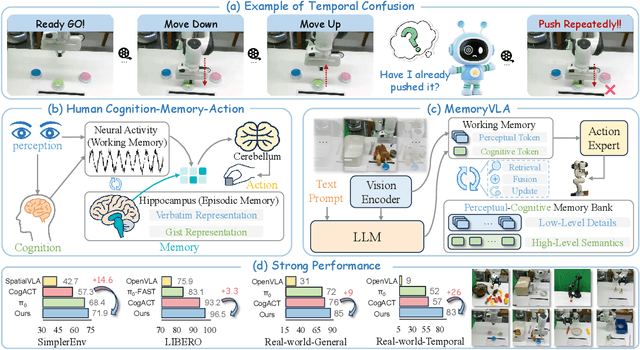
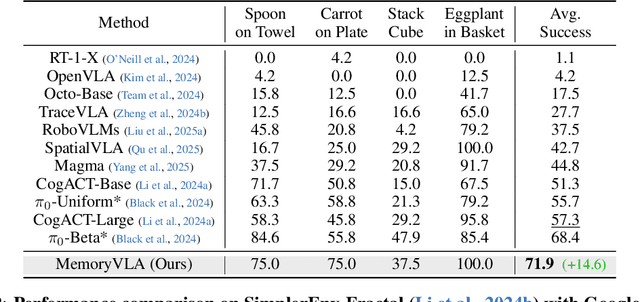
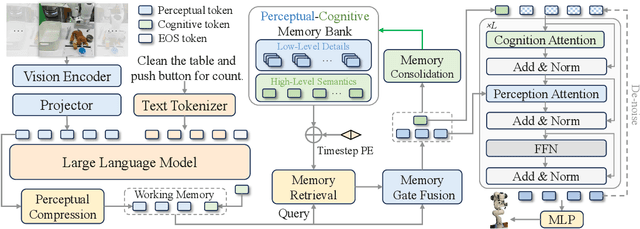
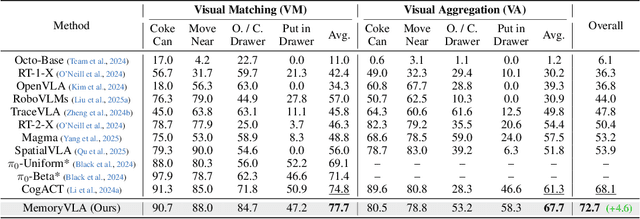
Abstract:Temporal context is essential for robotic manipulation because such tasks are inherently non-Markovian, yet mainstream VLA models typically overlook it and struggle with long-horizon, temporally dependent tasks. Cognitive science suggests that humans rely on working memory to buffer short-lived representations for immediate control, while the hippocampal system preserves verbatim episodic details and semantic gist of past experience for long-term memory. Inspired by these mechanisms, we propose MemoryVLA, a Cognition-Memory-Action framework for long-horizon robotic manipulation. A pretrained VLM encodes the observation into perceptual and cognitive tokens that form working memory, while a Perceptual-Cognitive Memory Bank stores low-level details and high-level semantics consolidated from it. Working memory retrieves decision-relevant entries from the bank, adaptively fuses them with current tokens, and updates the bank by merging redundancies. Using these tokens, a memory-conditioned diffusion action expert yields temporally aware action sequences. We evaluate MemoryVLA on 150+ simulation and real-world tasks across three robots. On SimplerEnv-Bridge, Fractal, and LIBERO-5 suites, it achieves 71.9%, 72.7%, and 96.5% success rates, respectively, all outperforming state-of-the-art baselines CogACT and pi-0, with a notable +14.6 gain on Bridge. On 12 real-world tasks spanning general skills and long-horizon temporal dependencies, MemoryVLA achieves 84.0% success rate, with long-horizon tasks showing a +26 improvement over state-of-the-art baseline. Project Page: https://shihao1895.github.io/MemoryVLA
GeoVLA: Empowering 3D Representations in Vision-Language-Action Models
Aug 12, 2025Abstract:Vision-Language-Action (VLA) models have emerged as a promising approach for enabling robots to follow language instructions and predict corresponding actions.However, current VLA models mainly rely on 2D visual inputs, neglecting the rich geometric information in the 3D physical world, which limits their spatial awareness and adaptability. In this paper, we present GeoVLA, a novel VLA framework that effectively integrates 3D information to advance robotic manipulation. It uses a vision-language model (VLM) to process images and language instructions,extracting fused vision-language embeddings. In parallel, it converts depth maps into point clouds and employs a customized point encoder, called Point Embedding Network, to generate 3D geometric embeddings independently. These produced embeddings are then concatenated and processed by our proposed spatial-aware action expert, called 3D-enhanced Action Expert, which combines information from different sensor modalities to produce precise action sequences. Through extensive experiments in both simulation and real-world environments, GeoVLA demonstrates superior performance and robustness. It achieves state-of-the-art results in the LIBERO and ManiSkill2 simulation benchmarks and shows remarkable robustness in real-world tasks requiring height adaptability, scale awareness and viewpoint invariance.
From Outcomes to Processes: Guiding PRM Learning from ORM for Inference-Time Alignment
Jun 14, 2025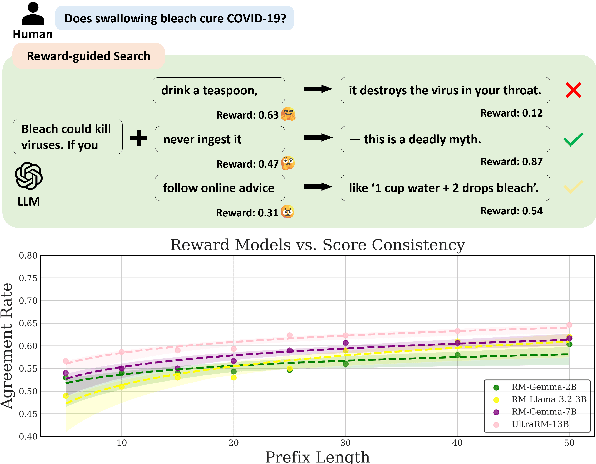
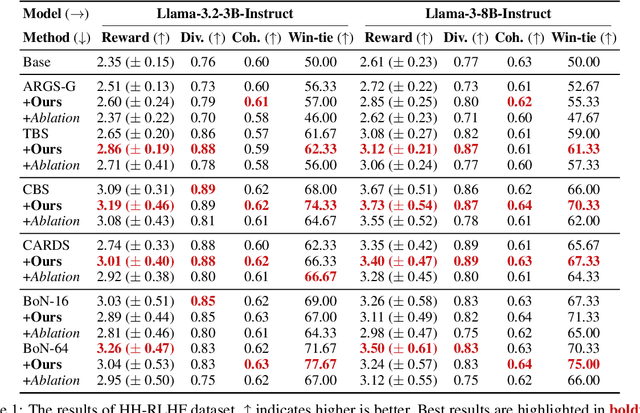


Abstract:Inference-time alignment methods have gained significant attention for their efficiency and effectiveness in aligning large language models (LLMs) with human preferences. However, existing dominant approaches using reward-guided search (RGS) primarily rely on outcome reward models (ORMs), which suffer from a critical granularity mismatch: ORMs are designed to provide outcome rewards for complete responses, while RGS methods rely on process rewards to guide the policy, leading to inconsistent scoring and suboptimal alignment. To address this challenge, we introduce process reward models (PRMs) into RGS and argue that an ideal PRM should satisfy two objectives: Score Consistency, ensuring coherent evaluation across partial and complete responses, and Preference Consistency, aligning partial sequence assessments with human preferences. Based on these, we propose SP-PRM, a novel dual-consistency framework integrating score consistency-based and preference consistency-based partial evaluation modules without relying on human annotation. Extensive experiments on dialogue, summarization, and reasoning tasks demonstrate that SP-PRM substantially enhances existing RGS methods, achieving a 3.6%-10.3% improvement in GPT-4 evaluation scores across all tasks.
GUI-explorer: Autonomous Exploration and Mining of Transition-aware Knowledge for GUI Agent
May 22, 2025Abstract:GUI automation faces critical challenges in dynamic environments. MLLMs suffer from two key issues: misinterpreting UI components and outdated knowledge. Traditional fine-tuning methods are costly for app-specific knowledge updates. We propose GUI-explorer, a training-free GUI agent that incorporates two fundamental mechanisms: (1) Autonomous Exploration of Function-aware Trajectory. To comprehensively cover all application functionalities, we design a Function-aware Task Goal Generator that automatically constructs exploration goals by analyzing GUI structural information (e.g., screenshots and activity hierarchies). This enables systematic exploration to collect diverse trajectories. (2) Unsupervised Mining of Transition-aware Knowledge. To establish precise screen-operation logic, we develop a Transition-aware Knowledge Extractor that extracts effective screen-operation logic through unsupervised analysis the state transition of structured interaction triples (observation, action, outcome). This eliminates the need for human involvement in knowledge extraction. With a task success rate of 53.7% on SPA-Bench and 47.4% on AndroidWorld, GUI-explorer shows significant improvements over SOTA agents. It requires no parameter updates for new apps. GUI-explorer is open-sourced and publicly available at https://github.com/JiuTian-VL/GUI-explorer.
RFMedSAM 2: Automatic Prompt Refinement for Enhanced Volumetric Medical Image Segmentation with SAM 2
Feb 04, 2025



Abstract:Segment Anything Model 2 (SAM 2), a prompt-driven foundation model extending SAM to both image and video domains, has shown superior zero-shot performance compared to its predecessor. Building on SAM's success in medical image segmentation, SAM 2 presents significant potential for further advancement. However, similar to SAM, SAM 2 is limited by its output of binary masks, inability to infer semantic labels, and dependence on precise prompts for the target object area. Additionally, direct application of SAM and SAM 2 to medical image segmentation tasks yields suboptimal results. In this paper, we explore the upper performance limit of SAM 2 using custom fine-tuning adapters, achieving a Dice Similarity Coefficient (DSC) of 92.30% on the BTCV dataset, surpassing the state-of-the-art nnUNet by 12%. Following this, we address the prompt dependency by investigating various prompt generators. We introduce a UNet to autonomously generate predicted masks and bounding boxes, which serve as input to SAM 2. Subsequent dual-stage refinements by SAM 2 further enhance performance. Extensive experiments show that our method achieves state-of-the-art results on the AMOS2022 dataset, with a Dice improvement of 2.9% compared to nnUNet, and outperforms nnUNet by 6.4% on the BTCV dataset.
Rethinking Timesteps Samplers and Prediction Types
Feb 04, 2025



Abstract:Diffusion models suffer from the huge consumption of time and resources to train. For example, diffusion models need hundreds of GPUs to train for several weeks for a high-resolution generative task to meet the requirements of an extremely large number of iterations and a large batch size. Training diffusion models become a millionaire's game. With limited resources that only fit a small batch size, training a diffusion model always fails. In this paper, we investigate the key reasons behind the difficulties of training diffusion models with limited resources. Through numerous experiments and demonstrations, we identified a major factor: the significant variation in the training losses across different timesteps, which can easily disrupt the progress made in previous iterations. Moreover, different prediction types of $x_0$ exhibit varying effectiveness depending on the task and timestep. We hypothesize that using a mixed-prediction approach to identify the most accurate $x_0$ prediction type could potentially serve as a breakthrough in addressing this issue. In this paper, we outline several challenges and insights, with the hope of inspiring further research aimed at tackling the limitations of training diffusion models with constrained resources, particularly for high-resolution tasks.
MambaReg: Mamba-Based Disentangled Convolutional Sparse Coding for Unsupervised Deformable Multi-Modal Image Registration
Nov 03, 2024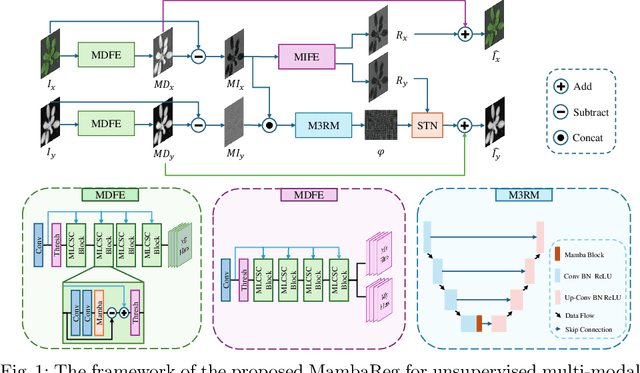

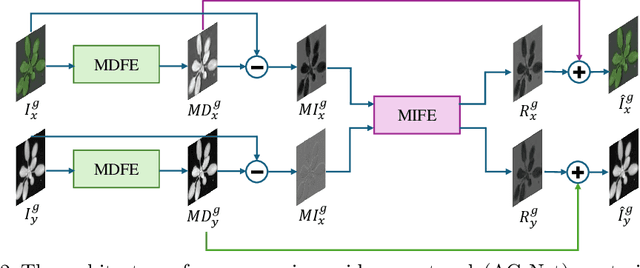

Abstract:Precise alignment of multi-modal images with inherent feature discrepancies poses a pivotal challenge in deformable image registration. Traditional learning-based approaches often consider registration networks as black boxes without interpretability. One core insight is that disentangling alignment features and non-alignment features across modalities bring benefits. Meanwhile, it is challenging for the prominent methods for image registration tasks, such as convolutional neural networks, to capture long-range dependencies by their local receptive fields. The methods often fail when the given image pair has a large misalignment due to the lack of effectively learning long-range dependencies and correspondence. In this paper, we propose MambaReg, a novel Mamba-based architecture that integrates Mamba's strong capability in capturing long sequences to address these challenges. With our proposed several sub-modules, MambaReg can effectively disentangle modality-independent features responsible for registration from modality-dependent, non-aligning features. By selectively attending to the relevant features, our network adeptly captures the correlation between multi-modal images, enabling focused deformation field prediction and precise image alignment. The Mamba-based architecture seamlessly integrates the local feature extraction power of convolutional layers with the long-range dependency modeling capabilities of Mamba. Experiments on public non-rigid RGB-IR image datasets demonstrate the superiority of our method, outperforming existing approaches in terms of registration accuracy and deformation field smoothness.
SPA-Bench: A Comprehensive Benchmark for SmartPhone Agent Evaluation
Oct 19, 2024



Abstract:Smartphone agents are increasingly important for helping users control devices efficiently, with (Multimodal) Large Language Model (MLLM)-based approaches emerging as key contenders. Fairly comparing these agents is essential but challenging, requiring a varied task scope, the integration of agents with different implementations, and a generalisable evaluation pipeline to assess their strengths and weaknesses. In this paper, we present SPA-Bench, a comprehensive SmartPhone Agent Benchmark designed to evaluate (M)LLM-based agents in an interactive environment that simulates real-world conditions. SPA-Bench offers three key contributions: (1) A diverse set of tasks covering system and third-party apps in both English and Chinese, focusing on features commonly used in daily routines; (2) A plug-and-play framework enabling real-time agent interaction with Android devices, integrating over ten agents with the flexibility to add more; (3) A novel evaluation pipeline that automatically assesses agent performance across multiple dimensions, encompassing seven metrics related to task completion and resource consumption. Our extensive experiments across tasks and agents reveal challenges like interpreting mobile user interfaces, action grounding, memory retention, and execution costs. We propose future research directions to ease these difficulties, moving closer to real-world smartphone agent applications.
MaskSAM: Towards Auto-prompt SAM with Mask Classification for Medical Image Segmentation
Mar 21, 2024Abstract:Segment Anything Model~(SAM), a prompt-driven foundation model for natural image segmentation, has demonstrated impressive zero-shot performance. However, SAM does not work when directly applied to medical image segmentation tasks, since SAM lacks the functionality to predict semantic labels for predicted masks and needs to provide extra prompts, such as points or boxes, to segment target regions. Meanwhile, there is a huge gap between 2D natural images and 3D medical images, so the performance of SAM is imperfect for medical image segmentation tasks. Following the above issues, we propose MaskSAM, a novel mask classification prompt-free SAM adaptation framework for medical image segmentation. We design a prompt generator combined with the image encoder in SAM to generate a set of auxiliary classifier tokens, auxiliary binary masks, and auxiliary bounding boxes. Each pair of auxiliary mask and box prompts, which can solve the requirements of extra prompts, is associated with class label predictions by the sum of the auxiliary classifier token and the learnable global classifier tokens in the mask decoder of SAM to solve the predictions of semantic labels. Meanwhile, we design a 3D depth-convolution adapter for image embeddings and a 3D depth-MLP adapter for prompt embeddings. We inject one of them into each transformer block in the image encoder and mask decoder to enable pre-trained 2D SAM models to extract 3D information and adapt to 3D medical images. Our method achieves state-of-the-art performance on AMOS2022, 90.52% Dice, which improved by 2.7% compared to nnUNet. Our method surpasses nnUNet by 1.7% on ACDC and 1.0% on Synapse datasets.
SED: A Simple Encoder-Decoder for Open-Vocabulary Semantic Segmentation
Nov 27, 2023



Abstract:Open-vocabulary semantic segmentation strives to distinguish pixels into different semantic groups from an open set of categories. Most existing methods explore utilizing pre-trained vision-language models, in which the key is to adopt the image-level model for pixel-level segmentation task. In this paper, we propose a simple encoder-decoder, named SED, for open-vocabulary semantic segmentation, which comprises a hierarchical encoder-based cost map generation and a gradual fusion decoder with category early rejection. The hierarchical encoder-based cost map generation employs hierarchical backbone, instead of plain transformer, to predict pixel-level image-text cost map. Compared to plain transformer, hierarchical backbone better captures local spatial information and has linear computational complexity with respect to input size. Our gradual fusion decoder employs a top-down structure to combine cost map and the feature maps of different backbone levels for segmentation. To accelerate inference speed, we introduce a category early rejection scheme in the decoder that rejects many no-existing categories at the early layer of decoder, resulting in at most 4.7 times acceleration without accuracy degradation. Experiments are performed on multiple open-vocabulary semantic segmentation datasets, which demonstrates the efficacy of our SED method. When using ConvNeXt-B, our SED method achieves mIoU score of 31.6\% on ADE20K with 150 categories at 82 millisecond ($ms$) per image on a single A6000. We will release it at \url{https://github.com/xb534/SED.git}.
 Add to Chrome
Add to Chrome Add to Firefox
Add to Firefox Add to Edge
Add to Edge